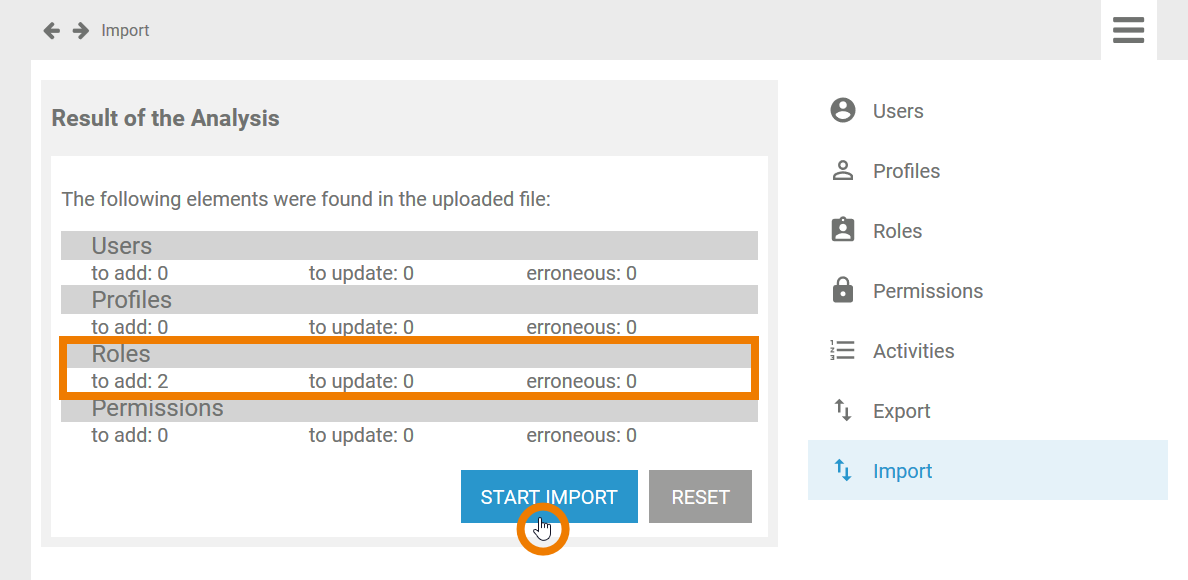Page History
Versions Compared
Key
- This line was added.
- This line was removed.
- Formatting was changed.
The advantages of using centrally managed roles during modeling in Scheer PAS BPaaS is obvious:
- You can assign them very easily to a great number of users.
- Central roles can be reused during modeling by only two clicks.
- Central roles are available in all profiles and projects of your BPaaS systemcomponent.
- You can use them multilingually by saving translations.
| Note |
|---|
If you want to transport your apps from one system BPaaS installation to another, for example to transfer a business app from the test system to your productive system, there is one important step to keep in mind though: You must also transfer the roles from one Scheer PAS Administration user management to the other. |
The yellow Role element is used during modeling in the BPaaS Editoreditor. The roles created during modeling are managed in your Scheer PAS Administrationthe user management. | |
| In BPaaS, you can export models , - for example to transfer them to another profile - or another systemBPaaS installation. | |
If you just use the export and import function in the BPaaS editor to transfer the model between different systemsBPaaS installations, the Role elements in the EPCs will be transferred - but in the new target system, they will be displayed in red color. Why is that? The export / import of a model out of the BPaaS Editor editor only creates the EPC elements, not the central roles themselves, as the central roles are managed in the Scheer PAS Administrationuser management. | |
| If you want to reuse the central roles in another systemBPaaS installation, you must use the export / import function in the corresponding Administrationsuser management installations.
|
| Then Now log in to the Administration user management of the target system and open installation (for example your productive system).
|
The roles are added in the Administration. They the user management of the target system. Now, the roles are also available in the corresponding BPaaS systemcomponent. If you already imported any EPC models containing these roles, the Role elements will now be displayed correctly. |
| Info |
|---|
The Role element in the BPaaS Editor editor and the roles managed in the Administration user management are referenced by ID. |

